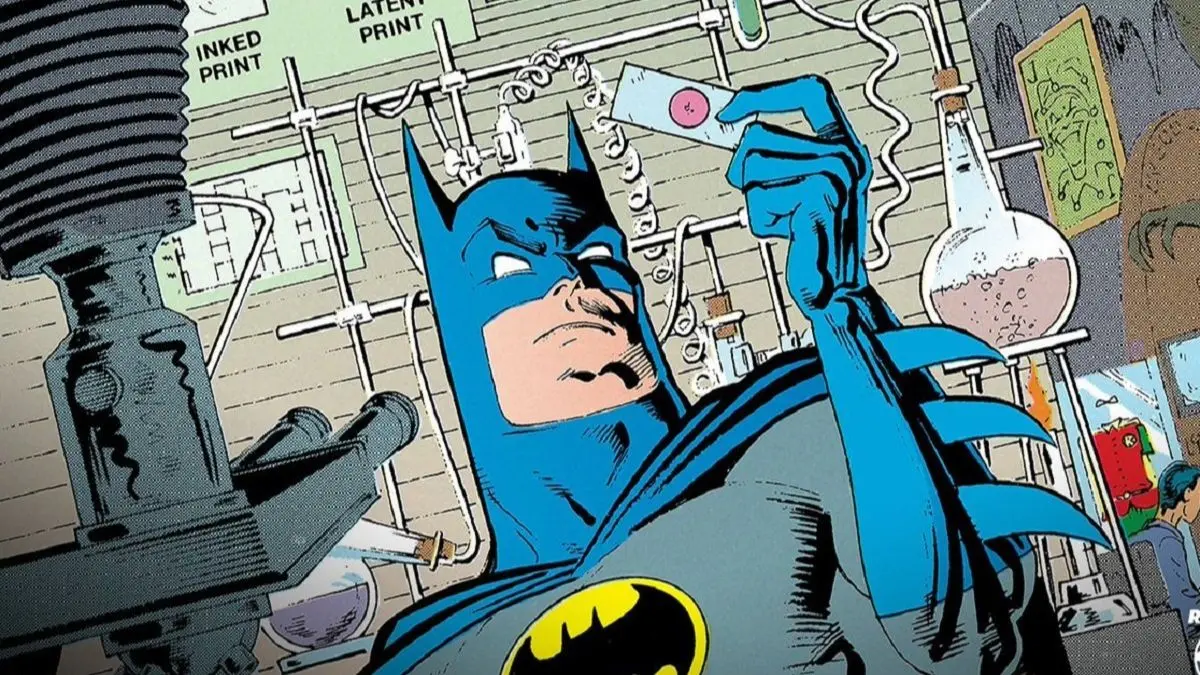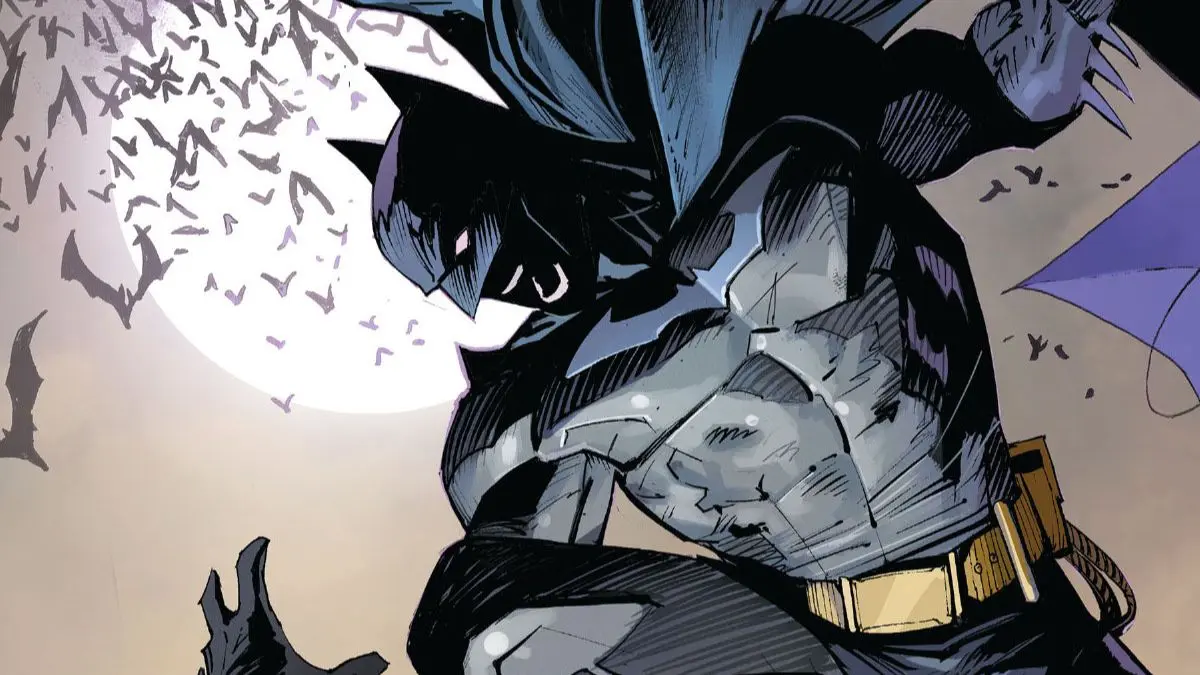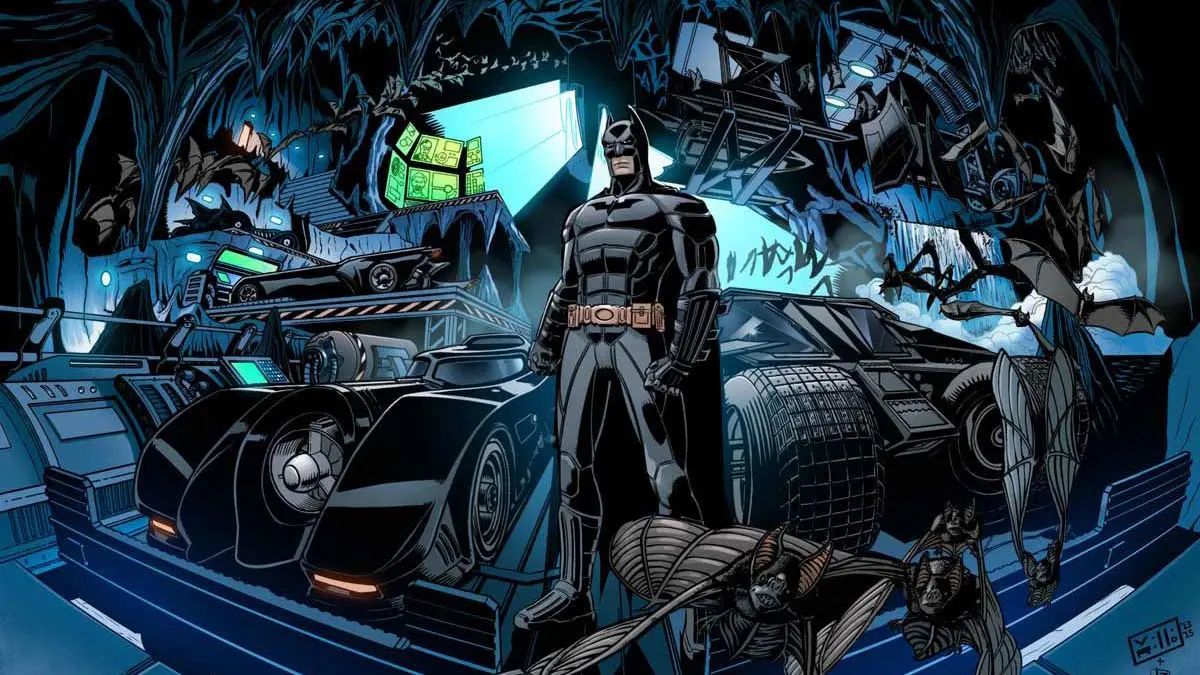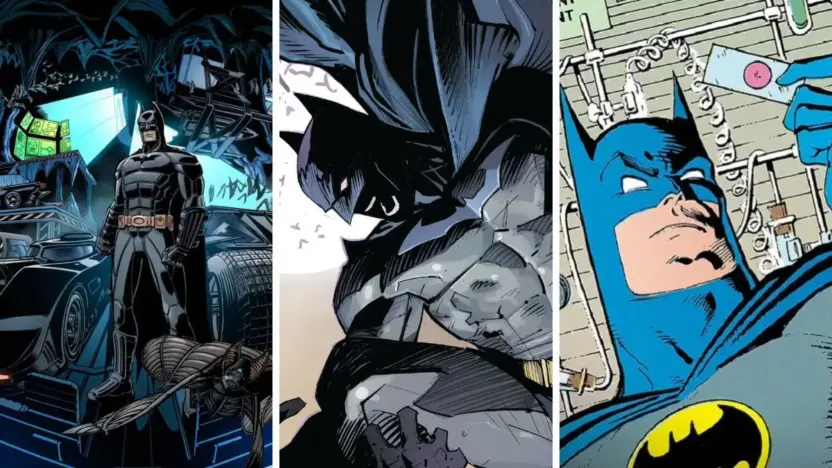In the shadow-laden alleys of Gotham City, amidst the towering skyscrapers that pierce the night sky, lurks a figure draped in the guise of a bat. This figure, known across the world as Batman, has captivated the imagination of millions not only through his imposing presence but through his unparalleled detective prowess. Batman, a creation of Bob Kane and Bill Finger, has evolved from a mere comic book character into a symbol of justice, a testament to human resilience and intellect. Often hailed as the “World’s Greatest Detective,” Batman’s adventures go beyond mere physical confrontations with the underbelly of Gotham; they delve into intricate mysteries, challenging puzzles, and the darkest corners of criminal minds.
At the heart of Batman’s appeal is his extraordinary skill set, mirroring the essential qualities of real-life investigators who navigate the complexities of criminal investigations and intelligence gathering. Unlike other superheroes, Batman’s powers do not stem from otherworldly sources or genetic mutations; they are the fruits of human effort, intellect, and a relentless pursuit of justice. This blog aims to bridge the fictional world of Batman with the tangible realm of investigative work, drawing parallels between the Caped Crusader’s methods and those employed by real-world detectives and investigators. Through this exploration, we seek not only to celebrate the iconic detective work of Batman but also to shed light on the critical, often underappreciated, skills of real-life investigators who, like Batman, work tirelessly in the shadows to bring light to the truth.
How Batman’s Skills Mirror Real-Life Investigators
Analytical Thinking and Problem-Solving
One of the hallmarks of Batman’s character is his exceptional analytical thinking and problem-solving skills. Time and again, Gotham City finds itself entangled in the complex schemes of villains like the Riddler, whose love for convoluted puzzles and cryptic messages challenges Batman’s intellect at every turn. Yet, it is precisely these challenges that showcase Batman’s deductive prowess. Through keen observation, logical reasoning, and a methodical approach to problem-solving, Batman unravels the most intricate of mysteries, often with little more than his wit and a deep understanding of his adversary’s psychology.
This facet of Batman’s skill set finds a real-world counterpart in the work of criminal investigators and forensic analysts. Like Batman, these professionals are often presented with puzzles in the form of crime scenes, where every detail can be a clue and every clue a step closer to solving the case. They must sift through evidence, recognize patterns, and construct a narrative from disparate pieces of information. This process requires not just technical knowledge, but also an ability to think critically and creatively, to see beyond the obvious and anticipate the unexpected. In both worlds, the ability to analyze complex scenarios, break them down into manageable parts, and systematically solve the puzzle is indispensable.
The parallel between Batman’s investigative approach and that of real-life investigators underscores the importance of analytical thinking and problem-solving in the pursuit of justice. It highlights the intellectual rigor required to navigate the labyrinth of criminal activity, whether in the fictional streets of Gotham or the reality of our own world. In this light, Batman’s adventures serve as a homage to the cognitive skills that underpin effective investigative work, reminding us that behind every solved case is a mind trained to think critically, observe keenly, and deduce wisely.

Forensic Science Expertise
Batman’s foray into the night often leads him to crime scenes that whisper secrets of the crimes committed, secrets that only a keen understanding of forensic science can unveil. The Dark Knight’s use of forensic techniques is a cornerstone of his investigative prowess, allowing him to extract evidence from the slightest traces left behind by criminals. From analyzing the composition of chemical residues to enhancing digital images for clues, Batman’s forensic expertise is integral to his success in combating the criminal elements of Gotham.
This aspect of Batman’s skill set mirrors the pivotal role forensic science plays in real-world criminal investigations. Forensic scientists and crime scene investigators work behind the scenes, employing a broad spectrum of scientific disciplines to solve crimes. They analyze DNA, fingerprints, ballistics, and digital footprints, transforming seemingly insignificant details into powerful evidence. The meticulous work of these professionals often serves as the linchpin in linking suspects to crime scenes, identifying victims, and reconstructing events.
The parallel between Batman’s fictional applications of forensic science and its real-world counterparts underscores the importance of scientific knowledge and technical proficiency in the field of criminal investigation. It highlights how forensic science bridges the gap between the crime and the courtroom, providing the objective evidence needed to achieve justice. Batman’s reliance on forensic science serves as a testament to the discipline’s indispensability in solving crimes, reflecting the real-life reliance on these methods to bring clarity to cases shrouded in mystery.
Technology and Tools
In his relentless pursuit of justice, Batman employs an arsenal of technology and gadgets that seem to leap from the pages of science fiction. The Batcomputer, with its unparalleled processing power, aids him in data analysis and criminal profiling. His utility belt, packed with an array of tools from grappling hooks to smoke bombs, equips him for any contingency. Surveillance equipment and advanced communication devices enable Batman to stay one step ahead of Gotham’s criminals, making technology a vital ally in his quest.
This reliance on technology finds a real-world echo in the tools and methods employed by law enforcement and private investigators. Today, technology plays a crucial role in criminal investigations, from the use of surveillance cameras and drones for gathering evidence to the application of sophisticated software for analyzing digital data. Investigators utilize GPS tracking to monitor suspects’ movements, while forensic analysts employ advanced imaging techniques to uncover evidence invisible to the naked eye. Like Batman, real-life investigators harness technology’s power to enhance their capabilities, making it an indispensable component of modern investigative work.
The comparison between Batman’s fictional use of technology and the real-world application of these tools illuminates the increasing importance of technological proficiency in solving crimes. It showcases the evolution of investigative techniques, driven by advancements in technology, and highlights the necessity for investigators to adapt and innovate continually. Batman’s gadgetry may belong to the realm of fiction, but the principle of leveraging technology to fight crime resonates strongly with the realities of contemporary law enforcement and investigative work.

Psychological Profiling
The battle against Gotham’s criminal masterminds often requires Batman to delve into the psyche of his adversaries. His ability to understand the motivations, emotional states, and behavioral patterns of criminals enables him to anticipate their moves and counteract their plans. This psychological insight is a critical tool in Batman’s investigative arsenal, allowing him to outmaneuver foes who rely on manipulation and terror.
This facet of Batman’s methodology aligns closely with the practice of psychological profiling used by real-life investigators. Profilers analyze the behavior of criminals, drawing on psychological theories and patterns to predict future actions and identify suspects. By understanding the psychological underpinnings of criminal behavior, investigators can narrow down suspects, devise strategies for interrogation, and prevent future crimes. Psychological profiling represents the intersection of psychology and criminal justice, offering a nuanced approach to understanding and combating crime.
The parallel between Batman’s psychological acumen and the techniques of real-life profiling underscores the significance of psychological insights in investigative work. It demonstrates how a deep understanding of human behavior can complement traditional investigative methods, providing a more holistic approach to solving crimes. Batman’s encounters with Gotham’s villains thus reflect the complexities and challenges of real-world investigations, where understanding the criminal mind is as crucial as any physical evidence.
Physical Training and Conditioning
While Batman’s intellectual capabilities are often at the forefront of his crime-fighting persona, his physical training and conditioning are equally essential. The Caped Crusader’s ability to engage in hand-to-hand combat, endure physical strain, and navigate the urban landscape of Gotham with agility and speed are crucial to his effectiveness as a vigilante. Batman’s rigorous training regimen ensures he remains at the peak of human physical condition, enabling him to confront not just the intellectual challenges posed by criminal masterminds but also the physical threats they present.
The importance of physical fitness and conditioning, though less glamorized, is also present in the realm of real-life investigators, particularly those in law enforcement. Officers undergo regular physical training to maintain their fitness levels, ensuring they are prepared for the physical demands of their job, which can range from pursuing suspects on foot to managing potentially violent confrontations. Additionally, private investigators and forensic experts often find themselves in situations where physical stamina and the ability to navigate challenging environments are necessary, whether it’s conducting surveillance for extended periods or collecting evidence from difficult-to-reach locations.
The parallel between Batman’s physical conditioning and the physical requirements of real-life investigative work highlights the comprehensive nature of investigative roles. Success in these fields requires a balance of mental acuity and physical readiness, reflecting the multifaceted challenges that investigators face in their pursuit of justice.

Ethics and Morality
At the core of Batman’s character is a steadfast moral code, one that guides his actions and decisions as he navigates the gray areas of vigilante justice. Batman’s commitment to not taking a life, despite the often lethal threats he faces, sets a standard for his conduct. His ethical stance, while sometimes creating internal conflict, underscores the importance of morality in his quest to protect Gotham. This adherence to a personal code of ethics mirrors the ethical considerations that real-life investigators must navigate as they carry out their duties.
Investigators, whether working in law enforcement or the private sector, are bound by legal and ethical guidelines that dictate their methods and actions. These guidelines ensure the respect for individuals’ rights and the integrity of the investigative process. Issues such as the legality of surveillance, the admissibility of evidence, and the ethical implications of undercover work are central to the discussions within investigative professions. Upholding these ethical standards is crucial for maintaining public trust and ensuring the fairness and effectiveness of the justice system.
The reflection of Batman’s moral dilemmas in the ethical challenges faced by real-life investigators underscores the complexity of investigative work. It highlights the importance of not only solving crimes but doing so in a manner that is just and ethical. Batman’s struggles with the ethics of vigilantism serve as a reminder of the weight of responsibility shouldered by those who work to uphold justice, emphasizing the role of integrity in their mission.
Also Read: Ancient One from Marvel Comics and Marvel Cinematic Universe



